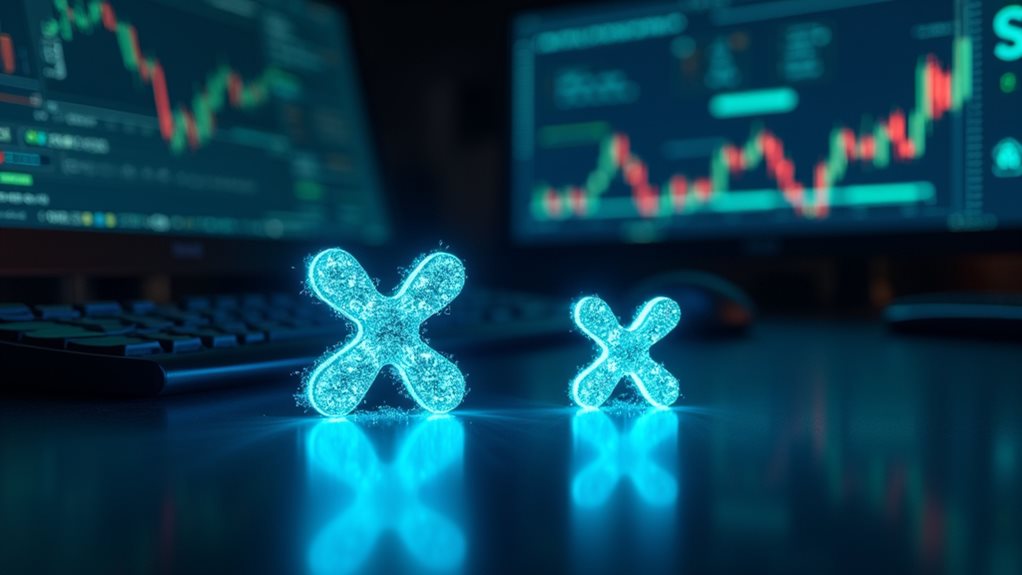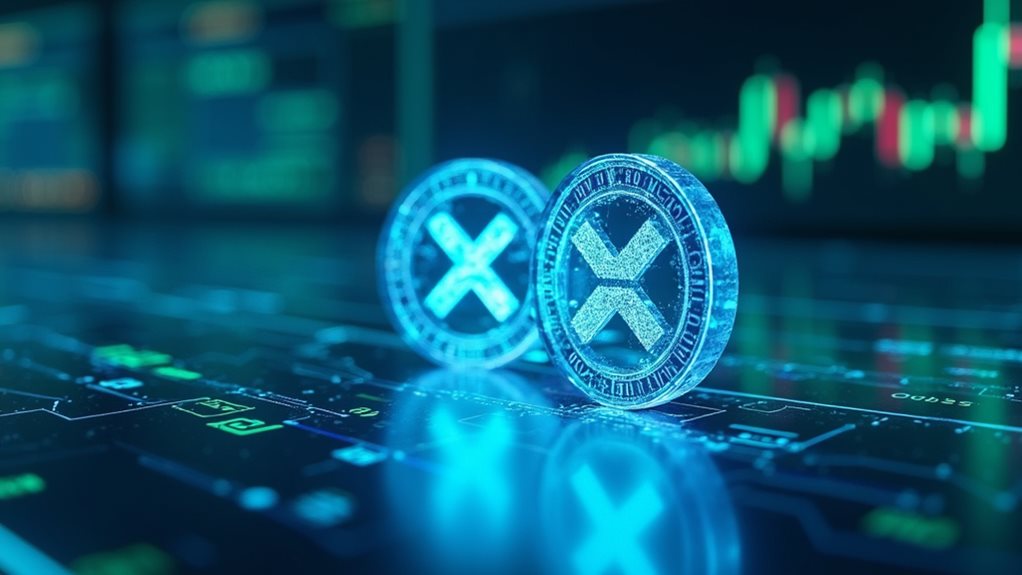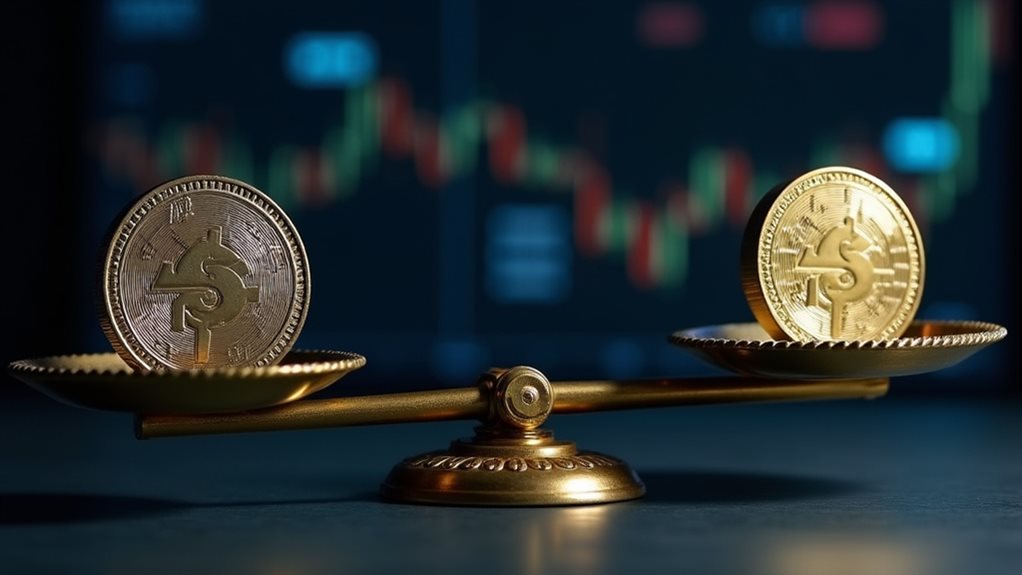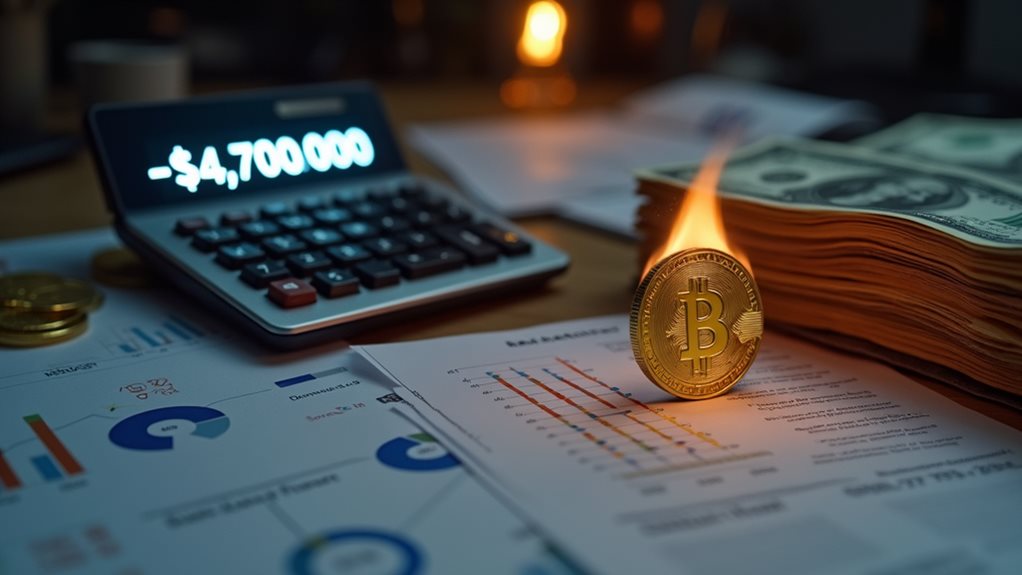Coinbase launched nano-sized XRP and Solana perpetual futures on August 18, 2025, cutting capital requirements for retail traders who previously couldn’t afford to play. Nano XRP covers 500 tokens, nano SOL handles 5, both settling in dollars with December 2030 expiration. The move comes as 1,200 US banks get crypto approval and competitors like Gemini beef up their offerings. Position limits hit 700,000 contracts for XRP, 340,000 for SOL. The implications stretch far beyond these numbers.

Coinbase is shaking up the US crypto derivatives game with nano-sized XRP and Solana perpetual futures launching August 18, 2025. Finally, retail traders won’t need a trust fund to get in on the action.
These nano contracts are smaller than their traditional counterparts. Way smaller. The nano XRP represents 500 XRP tokens, while nano SOL covers just 5 Solana tokens. Both settle in US dollars and expire in December 2030, giving traders plenty of runway.
These nano futures pack serious accessibility punch – 500 XRP or 5 SOL per contract, USD-settled through December 2030.
The contract specs are straightforward enough. Nano XRP has a tick size of $0.0001 per token, nano SOL ticks at $0.01. Position limits cap out at 700,000 contracts for XRP and 340,000 for SOL futures. Smart risk management, frankly.
What makes this launch notable? It’s all about accessibility. These nano futures slash the capital requirements that previously kept smaller traders on the sidelines. No more watching from the bleachers while institutional players dominate the field. With crypto banking approval for 1,200 US banks, institutional participation is expected to surge dramatically.
US traders get up to 10x leverage through a fully CFTC-regulated platform. That’s a stark contrast to the Wild West of offshore alternatives where regulatory protection is basically nonexistent. Coinbase is betting that compliance matters more than ever.
The perpetual structure means these contracts don’t expire monthly like traditional futures. Instead, they track spot prices through funding rate mechanisms. Trading hours align across Coinbase’s derivatives platform, keeping things simple.
This launch builds on Coinbase’s earlier nano Bitcoin and Ether futures success. The exchange is clearly doubling down on democratizing crypto derivatives access. Monthly listings provide consistent opportunities for traders to enter new positions. Meanwhile, competitors aren’t sleeping either.
Gemini recently added XRP and SOL as margin trading collateral. PayPal welcomed XRP for global payments. The Teucrium 2× Long Daily XRP ETF crossed $300 million in net inflows. The ecosystem is moving fast. Despite recent regulatory shifts potentially accelerating XRP ETF approval, traders are looking for more direct exposure through derivatives.
For Coinbase, this represents a strategic push into retail-focused derivatives. Lower barriers, smaller positions, legitimate regulatory oversight. It’s a formula that could reshape how Americans trade crypto futures.
The broader impact? More volume, more liquidity, more participation in regulated US crypto markets. Whether that translates to better outcomes for traders remains to be seen. But access? That problem just got solved.








